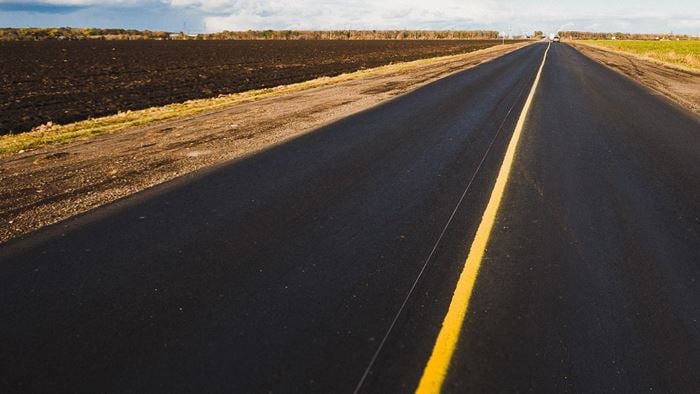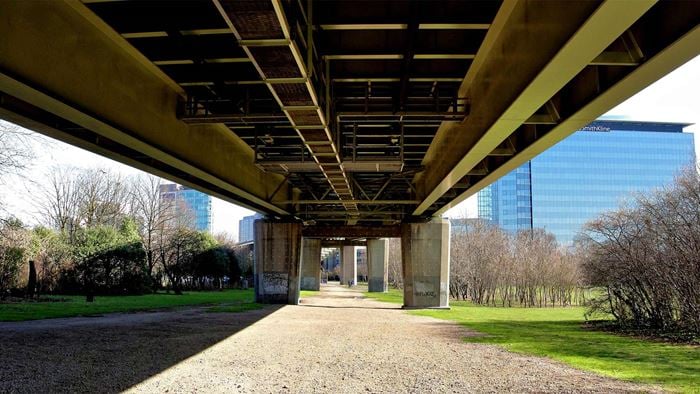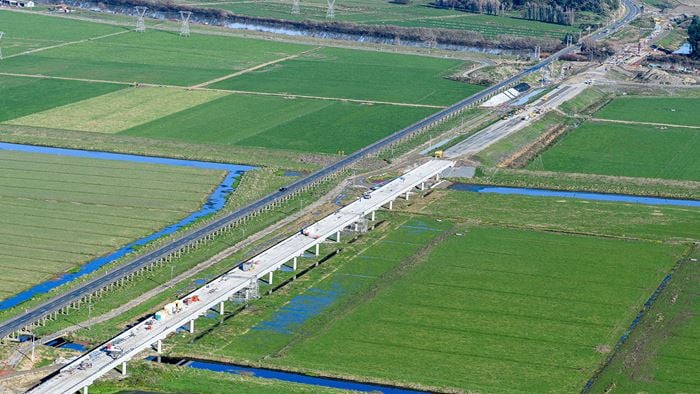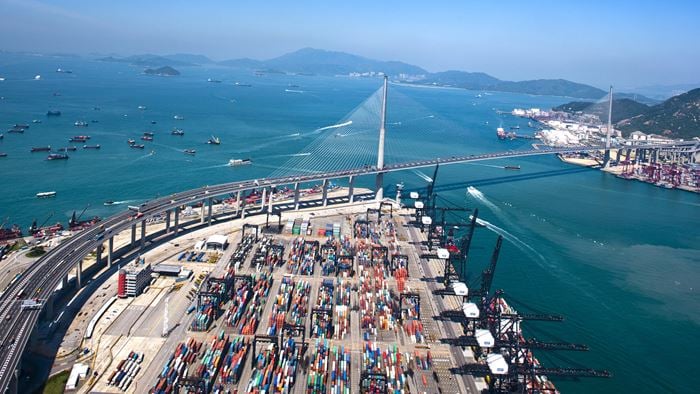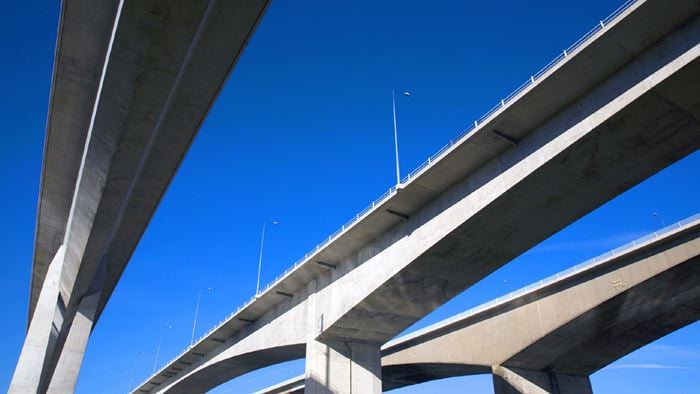The N33 road between Zuidbroek and Assen was widened over a course of 40km from single carriageway lanes to two double lanes. This was to improve traffic safety, traffic flow and accessibility of the region.
To realise this plan, the consortium 'Poort van Noord' was assigned by Rijkswaterstaat, the executive body of the Ministry of Infrastructure and Environment. Arup worked closely with the consortium to bring to life the optimal design.
BAM Infraconsult asked Arup to work on various aspects of the tender design, such as the widening of 15 overpasses, a fly-over, seven underpasses, ten eco passages, three culverts and a new lift bridge adjacent to an existing lift bridge. This bridge spans the Winschoterdiep near Zuidbroek, facilitating two extra lanes and a bicycle path.
Arup also assisted BAM during the design phase of the execution, recalculating the existing structures, the new lift bridge and a number of new structures.
The €120m contract for Design, Build, Finance and Maintain (DBFM) will last 20 years.
The new lift bridge over the Winschoterdiep is located on the widened N33 road between Assen and Zuidbroek.
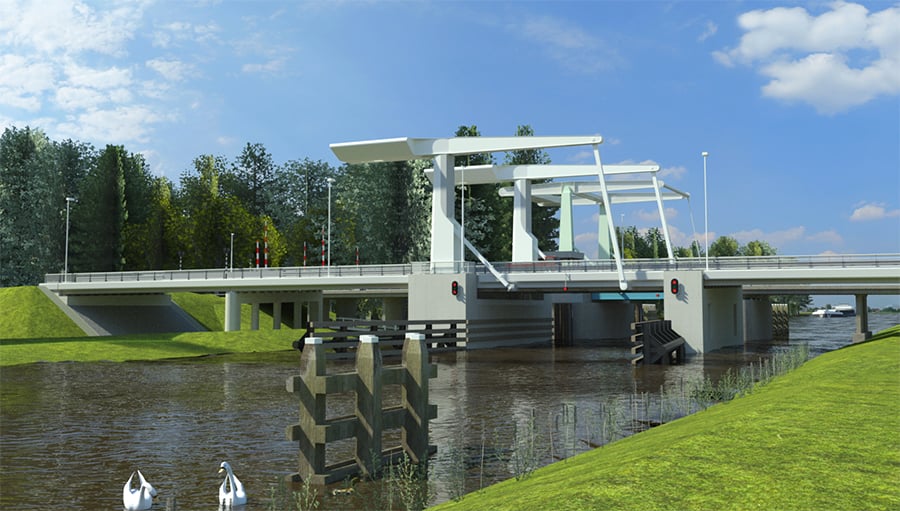
A technical challenge
In collaboration with BAM and the architect, Arup made the shape of the bridge technically possible. To diminish the traffic hindrance during regular maintenance on the upper construction, the columns were seperately placed outside the lanes. This means that when maintenance needs to take place, the road doesn't have to be closed. The mechanism is incorporated inside the columns, making a costly basement under deck level superfluous.
Use of digital tools
The bridge was completely designed using BIM/3D, seamlessly connecting the structures, the mechanisms and installations. The BIM/3D model also allowed us to check the free movement of the various parts of the bridge before the actual construction. By visualising the future camera images, the best positions of the camera control system used to remote control the bridge safely were determined.
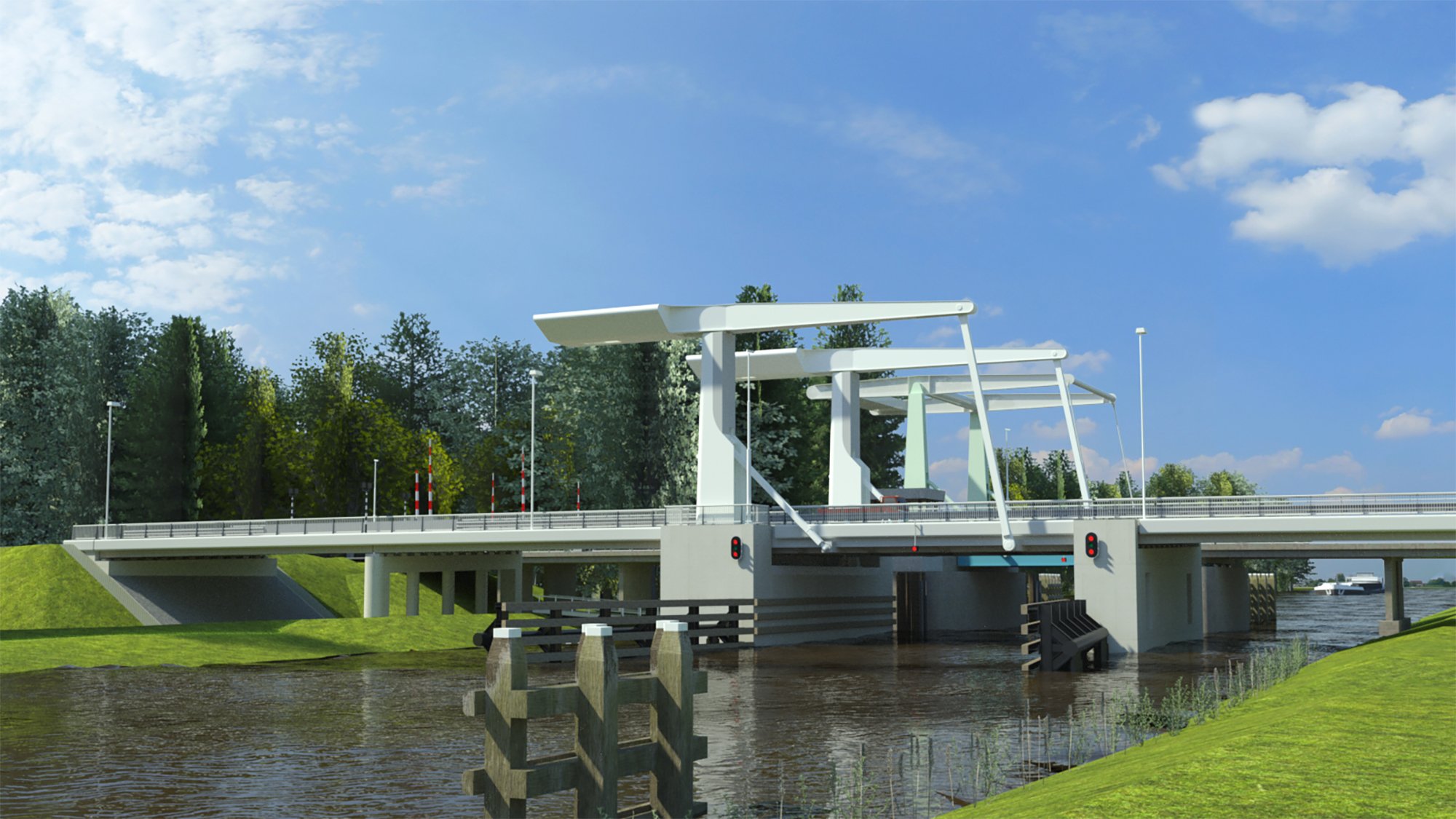 ;
;

